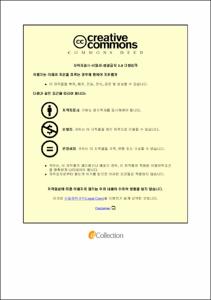만성폐쇄성 폐질환 환자에서 계절별 PM2.5 농도의 영향
- Abstract
- 초미세먼지는 만성폐쇄성 폐질환 환자의 발생과 입원, 사망과 연관성이 있는 것으로 알려져 있다. 하지만, 현재까지 초미세먼지와 만성폐쇄성 폐질환 사이의 관계를 분석한 연구들은 대규모 역학 자료를 바탕으로 이루어져 왔다. 초미세먼지농도와 실제 각 만성폐쇄성 폐질환 환자의 임상경과와의 연관성에 대한 연구는 아직 부족하다. 따라서 이 연구에서는 개별 만성폐쇄성 폐질환 환자 주변의 초미세먼지농도를 측정하면서 임상경과를 관찰하였다.
2019년부터 2020년까지 총 105명의 만성폐쇄성 폐질환 환자를 1년 동안 추적 관찰했다. 환자의 주거지에서 초미세먼지 농도를 측정하였으며, 환자 거주지 주변의 초미세먼지 농도 자료를 수집하였다.
만성폐쇄성 폐질환 환자 주변의 초미세 먼지 연간 평균 농도는 실내에서 16.2 μg/m3이었으며 실외에서 17.2 g/m3이었다. 계절별로는 겨울철에 가장 높은 농도를 보였다 (실내농도: 18.8 g/m3, 실외농도: 22.5). 초미세먼지의 농도는 St George’s Respiratory Questionnaire for COPD (SGRQ-C) 및 급성악화 발생과 유의미한 상관관계가 있는 것으로 나타났다. 특히 겨울철에서 상관관계가 두드러져 나타났다. 사회경제적으로 낮은 계층에 있는 환자들이 초미세먼지 농도 조절에 어려움을 겪고 있는 것으로 나타났으며, 이 환자들이 초미세먼지 농도에 더 많은 영향을 받고 있었다. 또한 초미세먼지 농도는 impulse osciollometry 값의 변화와 연관성이 있었는데 이는 초미세먼지가 소기도 저항에 영향을 미치는 것으로 볼 수 있다.
결론적으로 만성폐쇄성 폐질환 환자들이 계절별로 다른 초미세먼지 농도에 노출되었으며, 초미세먼지가 이들의 건강에 미치는 영향 역시 계절별로 다르게 나타났다. 가장 농도가 높으며 만성폐쇄성 폐질환 임상지표에 악영향을 보인 계절은 겨울이었다. 초미세먼지 농도와 가장 연관성이 깊은 임상지표는 SGRQ-C와 급성악화 빈도임을 확인할 수 있었다.
|Background:
Exposure to particulate matter of diameter < 2.5 μm (PM2.5) is a risk factor of occurrence and worsening chronic obstructive pulmonary disease (COPD). However, most evidence comes from epidemiologic data without individual measurement of PM2.5. The levels of PM2.5 are known to vary seasonally, but the seasonal differences in the impact of PM2.5 have not been studied. We aimed to investigate how PM2.5 impact COPD patients as season change.
Methods:
From 2019 to 2020, 105 COPD patients were followed for one year. Individual indoor and outdoor PM2.5 concentrations were monitored continuously, and detailed PM2.5 measurements and clinical parameters were assessed trimonthly.
Results
The mean annual indoor and outdoor PM2.5 concentrations were 16.2 ± 8.4 μg/m3 and 17.2 ± 5.0 μg/m3, respectively with the highest concentration in winter (indoor: 18.8 ± 11.7μg/m3; outdoor; 22.5 ± 5.0 μg/m3). High PM2.5 concentrations showed significant correlations with the aggravation of St George’s Respiratory Questionnaire for COPD (SGRQ-C) and acute exacerbation, mainly in winter season. Lower socioeconomic patients were more susceptible to the increase of PM2.5. Small airway resistance, the difference between resistance at 5 Hz and 20 Hz by the impulse oscillometry (R5-R20), also increased with PM2.5 concentration.
Conclusion:
The ambient PM2.5 concentration in individual COPD patients varied seasonally. The main clinical parameters affected by the higher levels of PM2.5 were SGRQ-C, acute exacerbation and R5-R20, with the associations most prominent in winter.
- Issued Date
- 2022
- Awarded Date
- 2022-02
- Type
- dissertation
- Alternative Author(s)
- Jin-Young Huh
- Affiliation
- 울산대학교
- Department
- 일반대학원 의학과
- Advisor
- 이세원
- Degree
- Doctor
- Publisher
- 울산대학교 일반대학원 의학과
- Language
- eng
- Rights
- 울산대학교 논문은 저작권에 의해 보호 받습니다.
- Appears in Collections:
- Medicine > 2. Theses (Ph.D)
- 파일 목록
-
-
Download
 200000604591.pdf
기타 데이터 / 985.22 kB / Adobe PDF
200000604591.pdf
기타 데이터 / 985.22 kB / Adobe PDF
-
Items in Repository are protected by copyright, with all rights reserved, unless otherwise indicated.